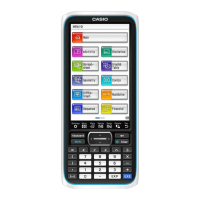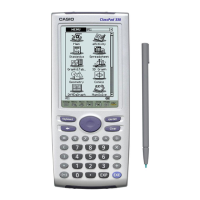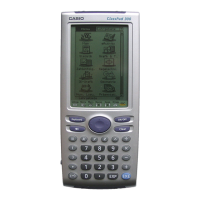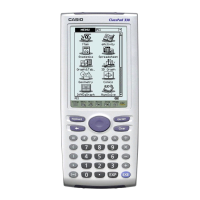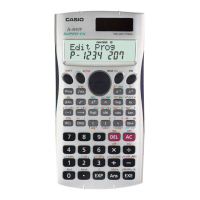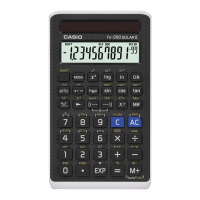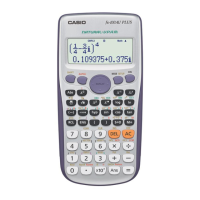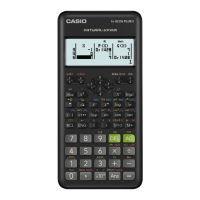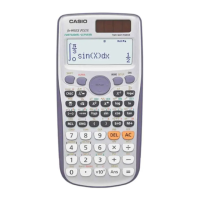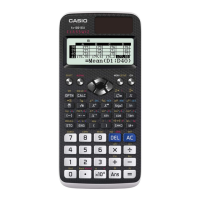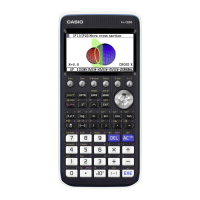Chapter 2: Main Application 89
u poissonCDf [Action][Distribution/Inv.Dist][Discrete][poissonCDf]
Function: Returns the cumulative probability in a Poisson distribution that the success will occur between
specified lower value and upper value.
Syntax: poissonCDf(lower value, upper value, [ ) ]
Calculation Result Output:
prob
Example: To determine the Poisson cumulative probability when lower
value = 2, upper value = 3, = 2.26
u invPoissonCDf [Action][Distribution/Inv.Dist][Inverse][invPoissonCDf]
Function: Returns the minimum number of trials of a Poisson cumulative probability distribution for specified
values.
Syntax: invPoissonCDf(
prob , [ ) ]
Calculation Result Output:
x Inv, ½ x Inv
Important!
See “Important!” under “invBinomialCDf” on page 88.
Example: To determine the minimum number of trials when prob = 0.8074,
= 2.26
u geoPDf [Action][Distribution/Inv.Dist][Discrete][geoPDf]
Function: Returns the probability in a geometric distribution that the success will occur on a specified trial.
Syntax: geoPDf(
x , pos [ ) ]
Calculation Result Output:
prob
Example: To determine the geometric probability when x = 6, pos = 0.4
u geoCDf [Action][Distribution/Inv.Dist][Discrete][geoCDf]
Function: Returns the cumulative probability in a geometric distribution that the success will occur between
specified lower value and upper value.
Syntax: geoCDf(lower value, upper value,
pos [ ) ]
Calculation Result Output:
prob
Example: To determine the geometric probability when lower value = 2,
upper value = 3, pos = 0.5
u invGeoCDf [Action][Distribution/Inv.Dist][Inverse][invGeoCDf]
Function: Returns the minimum number of trials of a geometric cumulative probability distribution for specified
values.
Syntax: invGeoCDf(
prob , pos [ ) ]
Calculation Result Output:
x Inv, ½ x Inv
Important!
See “Important!” under “invBinomialCDf” on page 88.
Example: To determine the minimum number of trials when
prob = 0.875,
pos = 0.5
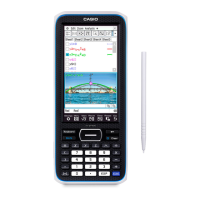
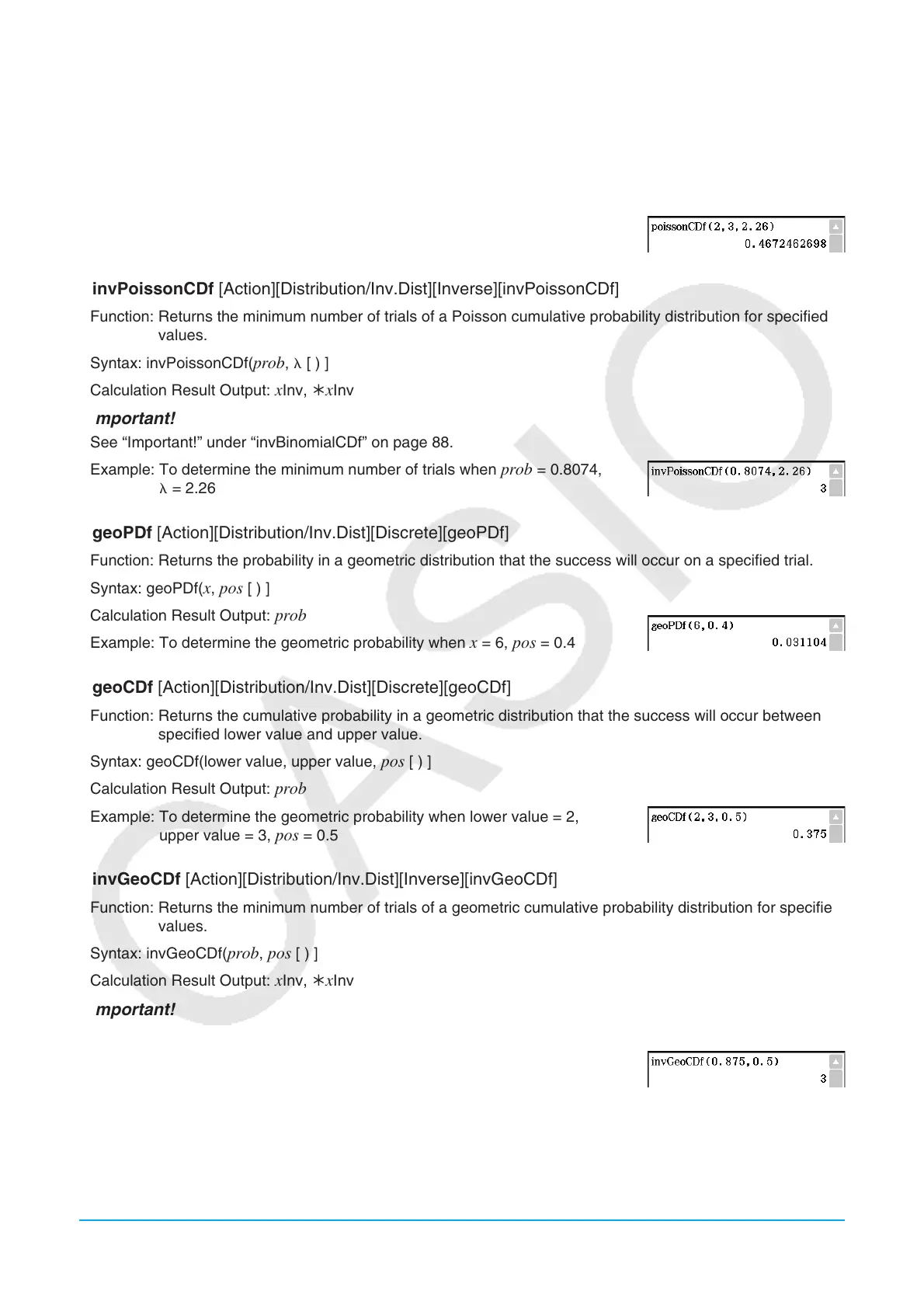